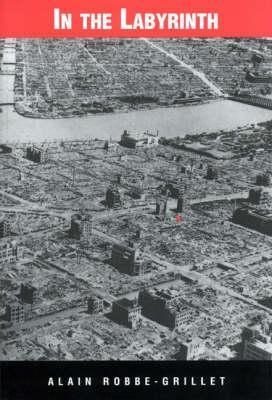What do you think?
Rate this book


188 pages, Paperback
First published October 1, 1959
I am alone here now, under cover. Outside it is raining, outside you walk through the rain with your head down, shielding your eyes with one hand while you stare ahead nevertheless, a few yards ahead, at a few yards of wet asphalt; outside it is cold, the wind blows between the bare black branches; the wind blows through the leaves, rocking whole boughs, rocking them, rocking, their shadows swaying across the white roughcast walls. Outside the sun is shining, there is no tree, no bush to cast a shadow, and you walk under the sun shielding your eyes with one hand while you stare ahead, only a few yards in front of you, at a few yards of dusty asphalt where the wind makes patterns of parallel lines, forks, and spirals.
The soldier continues to stare down the street.
When he finally turns to look at the boy, the latter has completely disappeared.
The soldier thinks he has definitely lost the track when he sees the boy waiting for him a few feet away, under a street light, huddled in his black cape already white with snow.
“Here it is,” he says, pointing to a door just like the others.

A simplistic plot(less) summary. Events are told and things are described. Most everything involves a soldier carrying a box. He jumpcuts from nexus to nexus within a city with plenty of buildings but without landmarks. Streets are identical. This must be shown on a screen. Animated. Like with crayons. No. Or stop motion photography. Cards with the dialog written. Not many cards. It will be easy for me because there are no people moving about the streets with the soldier. A boy with a cape. A man with a fur-lined coat and an umbrella. One at a time with the soldier. I can draw that. But the many soldiers. And in the café. It's an etching, the eye ingests the patrons, bartender, and waitress within one. All sleeping within one army barracks hospital room. A sort of family unit inside one residential one-room residence. The soldier might be injured, sick, or simply unable to experience time. Normally. Or at all. No. I'm thinking of the narrator. It's snowing and he has a sallow complexion with a certain amount of days' beard growth. Or rain. Silent snowfall, even vocalizations, called speech, might not be auditory. It's all his thoughts. The tree falls inside a skull. I can tell you that. No one hears a thing. Read images of vision. I stopped summarizing some time ago.